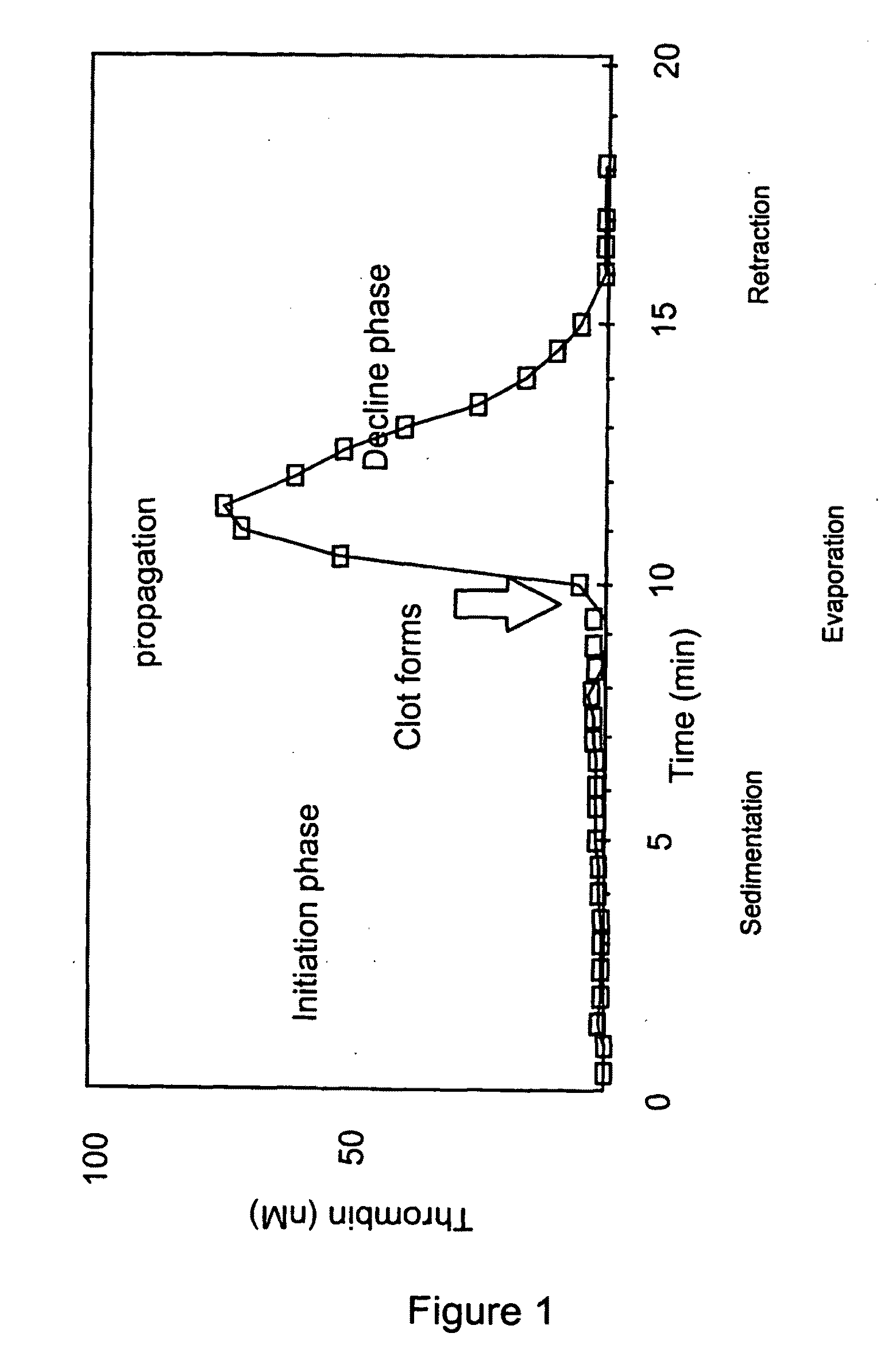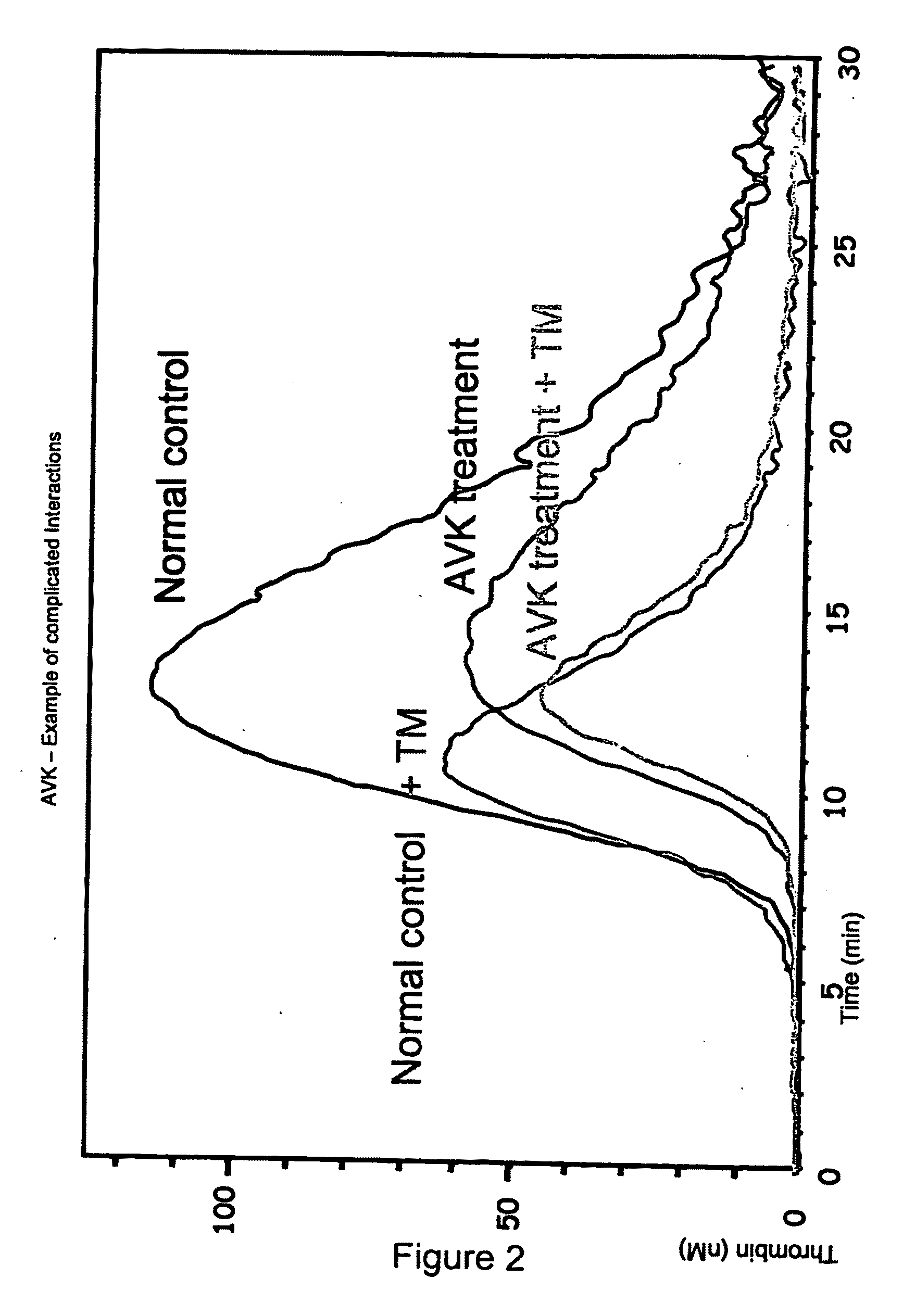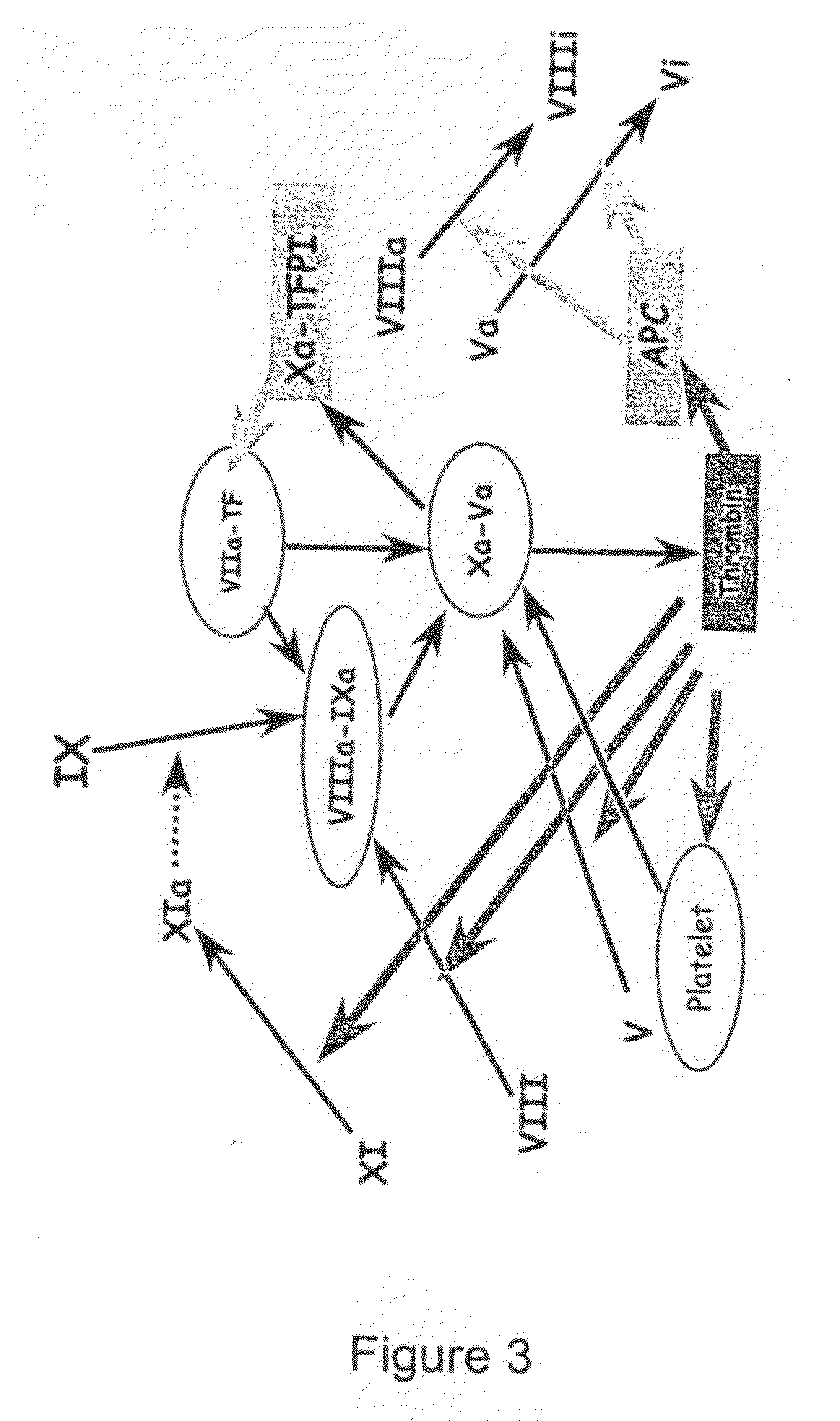Measuring thrombin activity in whole blood
a thrombin activity and whole blood technology, applied in the direction of biochemistry instruments and processes, material testing goods, instruments, etc., can solve the problems of insufficient or inadequate practicality, extreme impreciseness, and strong limitations in the practical use of the techniqu
- Summary
- Abstract
- Description
- Claims
- Application Information
AI Technical Summary
Benefits of technology
Problems solved by technology
Method used
Image
Examples
example 1
Multiple Lecture Points, Adding a Mesh and a Cover
[0122]Thrombin generation was triggered as indicated above in three wells. Per well 24 spots were illuminated and measured one after the other. The signals from the 24 points at each reading were added. The results are shown in FIG. 7. It is seen that the signal is augmented and stabilized by adding a grid, here a nylon filter with a 600 μM mesh opening, 51% open area and a thickness of 445 μM (Spectrum Laboratories Inc. Rancho Dominguez Calif., USA). However, the signal spuriously increases with time due to evaporation and concentration of the top layer. This is prevented by covering with a plastic foil. (Thermosprint optical clean sealing tape for QPCR (Bilatec AG, Mannheim, Germany).
example 2
Multiple Lecture Points, Adding a Gel and a Cover
[0123]Thrombin generation was triggered as indicated above in three wells. Per well 24 spots were illuminated and measured one after the other. The signals from the 24 points at each reading were added. To two wells 700 μL of a 50% (v / v) Spehadex-25 in 150 mM NaCl solution is added and the powder is allowed to settle for 5 minutes. The supernatant (300-400 μL) is removed from the well with a pipette.
[0124]Then 120 μL of the clotting blood mixture is added. On top of one of these two wells a plastic foil. (Thermosprint optical clean sealing tape for QPCR (Bilatec AG, Mannheim, Germany) was applied. The results are comparable to those in FIG. 7
example 3
The Light with an Optical Device
[0125]For this experiment one well, with grid and cover as in example 1, was measured with the aid of a Fluostar optima fluorimeter (BMG Labtech, Offenburg, Germany). The light from the sample was collected into a Huygens eyepiece (10× magnification) and read after passing through this optical device. The results are shown in FIG. 8
PUM
| Property | Measurement | Unit |
|---|---|---|
| thickness | aaaaa | aaaaa |
| thickness | aaaaa | aaaaa |
| thickness | aaaaa | aaaaa |
Abstract
Description
Claims
Application Information
 Login to View More
Login to View More - R&D
- Intellectual Property
- Life Sciences
- Materials
- Tech Scout
- Unparalleled Data Quality
- Higher Quality Content
- 60% Fewer Hallucinations
Browse by: Latest US Patents, China's latest patents, Technical Efficacy Thesaurus, Application Domain, Technology Topic, Popular Technical Reports.
© 2025 PatSnap. All rights reserved.Legal|Privacy policy|Modern Slavery Act Transparency Statement|Sitemap|About US| Contact US: help@patsnap.com



